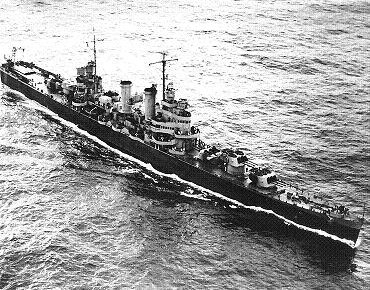![]() The Pacific War Online Encyclopedia
The Pacific War Online Encyclopedia
|
| Previous: Light Carriers (CVL) | Table of Contents | Next: Lim, Vicente |

National Archives #: 80-G-383754
Light cruisers were distinguished from heavy cruisers by the fact that they had 6” (152mm) or lesser caliber guns rather than 8” (203mm) guns. There was some tendency for light cruisers to have less protection and a lower displacement than heavy cruisers, but this was a rule of thumb rather than a strict classification criterion.
Japanese light cruisers had a well-defined role as destroyer and submarine flotilla leaders. This put a premium on speed over other qualities, so that the Japanese light cruisers tended not to survive much battle damage. On the other hand, some Japanese light cruisers carried the deadly Long Lance, which tended to make up for other deficiencies.
U.S. practice was to design large destroyers to serve as destroyer flotilla leaders, and use light cruisers independently, often in a screening role. In particular, certain U.S. light cruisers were designed specifically to serve as antiaircraft platforms for task forces. U.S. light cruisers varied widely in their fighting qualities; some classes were as well-protected and structural robust as heavy cruisers, while others were downright fragile.
Leander class
Southampton class
The Pacific War Online Encyclopedia © 2007-2009 by Kent G. Budge. Index